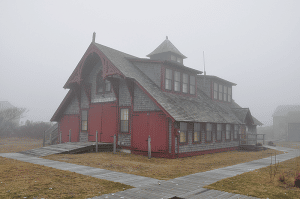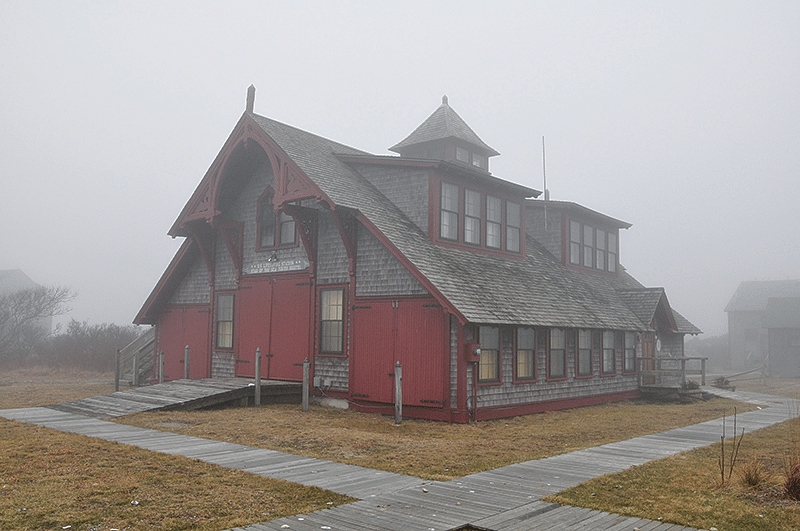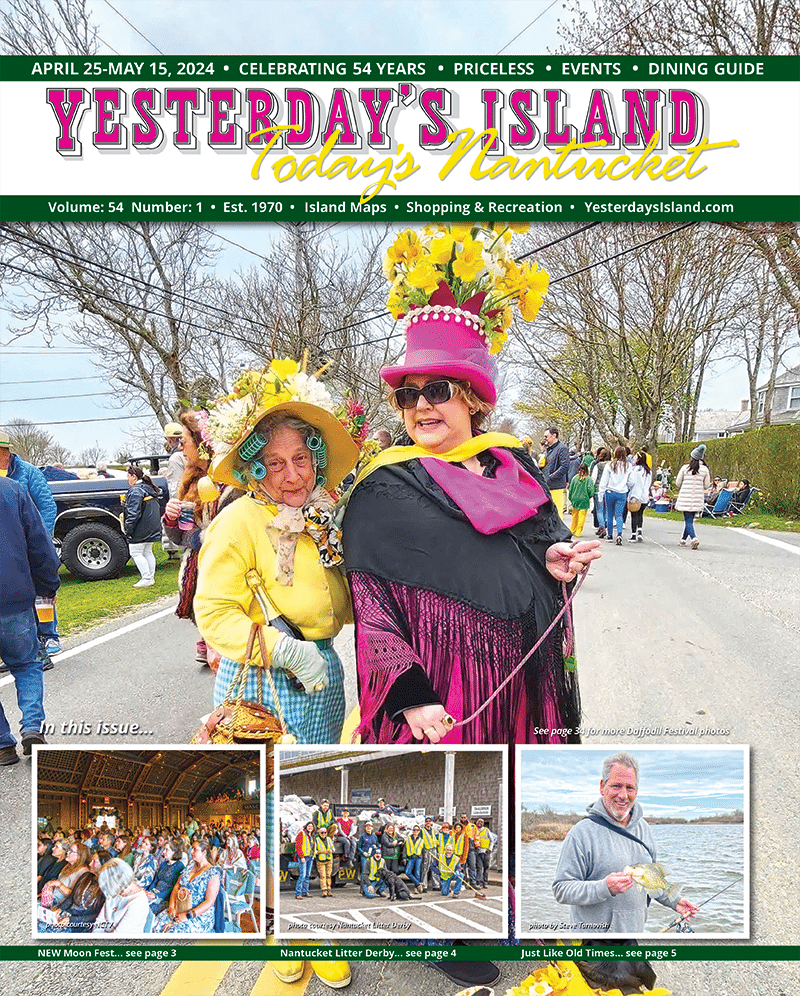• by Frances Ruley Karttunen •

After the Great Fire of 1846, Nantucket experienced a swift decline from its former prosperity. Whales were growing ever scarcer and voyages to the Pacific whaling grounds ever longer, requiring larger ships with deeper drafts. Because of the sandbar across the mouth of Nantucket’s great harbor, out-bound ships had to be fitted and provisioned elsewhere, and upon return they had to off-load their cargos of oil before coming home to Nantucket. Most Nantucketers had a strong sentimental attachment to their island home, but they were also masters of double-entry bookkeeping, and they knew that Nantucket had lost what was left of the whaling industry to New Bedford, with its deep-water harbor and railhead.
When the 1849 Gold Rush beckoned, a large number of Nantucketers departed for California to try their luck on the far side of the United States. They used most of the remaining whaling vessels to get there, and then they abandoned them to rot in San Francisco Bay.
Of the men who stayed behind through the 1850s, around 350 signed up to fight for the Union in the Civil War—more than fifty more than the town’s quota. Seventy-three died in action, and many of the survivors did not return to live on the island after the war was won.
Nantucket’s population stood at 9,012 in 1840, and by 1865 it had fallen to 4,748. (It would fall to a low of 2,797 by 1920.) In 1860 there were 145 unoccupied dwellings on the island, with a concentration of them on the south edge of town. By 1887, there were 34 unoccupied farms.
The future lay with a seasonal economy of summer visitors and all the services they would need: hotels and rental cottages, meals, transportation, communication, and entertainment. What is more, the island needed to be beautified. None of this existed on the South Shore. All the shore offered was the magnificent sweep of the Atlantic hurling itself unto the beach and magnificent sunsets at the close of day.
In July 1873, the newspaper reported that off-island promoters had been enthusiastically welcomed to the island. They had come to negotiate the purchase of land with three miles of frontage on the South Shore for a development to be called Surfside.
The recently created Life-Saving Service also had an interest in the immediate area. Because of unobstructed view out to sea and in both directions along the shore, it was an excellent site on which to build the first of Nantucket’s Life-Saving Stations. Surfside Station was built in 1874 and opened in December of that year.
With the Life-Saving Station, there was a year-round presence at Surfside and an interesting destination. The daily drills of the surfmen provided visitors with something to watch once they got there.
But how to get to Surfside? A hard-surfaced road was planned all the way from Main Street via Pleasant Street and the newly named Atlantic Avenue to the ocean shore. Sixty-eight of the town’s vacant houses were demolished, and the rubble from their chimneys and foundations used in the new roadbed. It was a slow process, but eventually the new road reached as far south as Shear Pen Hill, named for the vast sheep pens that lay between town and the shore. Hope was expressed that the road would go all the way to Surfside by fall of 1882, but it wasn’t until a year later that workers finally made a cut through the hill. In the meantime, a railroad that had been discussed for years was finally built, and train service to Surfside was inaugurated on July 4, 1881.
Once visitors arrived in Surfside, there were shore dinners and entertainments to keep them busy and induce them to consider buying a lot and building a summer residence. A large hotel was transported from the mainland and erected on the bluff overlooking the sea, with a boardwalk laid out from the hotel to the Life-Saving Station. Many evenings began with formal dances in the hotel salon. A trapeze artist even performed under lights on the hotel’s lawn.
Despite all the effort, the scheme failed. A storm demolished the little depot and washed out the railroad tracks. In another storm, part of the hotel collapsed. In the 1890s next to no one could be induced to buy land in Surfside.
After the turn of the century, however, London-born actress Mary Mannering built a very large house on the bluff at Surfside. Née Florence Friend, Mannering began starring in American productions around 1900 and was most famous for her role as Rose Trelawny in a revival of Trelawny of the Wells. After a decade of starring roles, she retired in 1911. Although she lived on for another four decades, she abandoned her Surfside house, which fell into acute decay. In the mid 1950s the building was rescued and restored, and most recently, despite its grandiose size, it has been moved back on its lot, away from the edge of the bluff.
In the meantime, Surfside Life-Saving Station went about its business performing rescues, beginning with the wreck of the W. F. Marshall on March 7, 1877 and continuing with other vessels driven on shore over the years. Between dramatic events, the keeper and his surfmen helped keep local fishermen safe. Looking back on the tenure of Keeper Eugene Clisby from 1891 to 1915, Leland Topham wrote, “It was always pleasing on rough days to see the genial skipper on the beach waiting to con the dories through the breakers.”
Captain Clisby was succeeded by Keeper Albert Rohdin, who had previously served as Keeper at Muskeget Life-Saving Station. At this juncture the Life-Saving Stations were transferred to the newly formed United States Coast Guard, and Keeper Rohdin became a chief warrant officer in the new service.
Unlike the shore at Madaket, the beach in front of Surfside Station has accreted over the years, creating so much land between the station and the surf that no crew today could possibly draw a surfboat from the open doors of the station down to the water. This did not become an issue however, because Surfside Station was taken over by the Navy in the 1920s as a Radio Compass Station. During World War II the Coast Guard took over the Compass Station, and at the end of the war, the old station was abandoned.
The solidly-constructed station building endured, however, and became today’s Star of the Sea Youth Hostel.
Frances Karttunen’s books on Nantucket are available in local bookstores.



